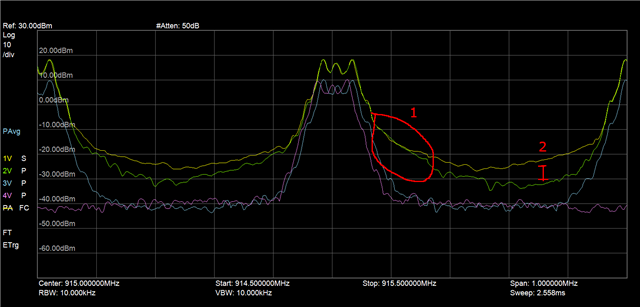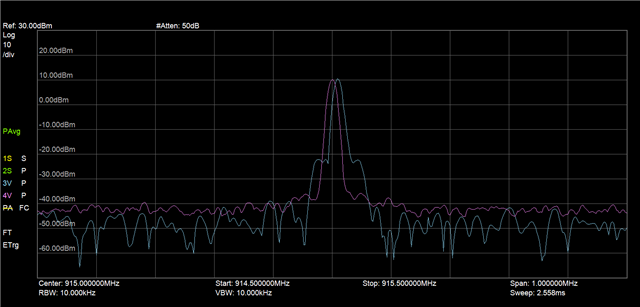Other Parts Discussed in Thread: CC1200, ,
Tool/software:
I had previously submitted a thread regarding switching between low power and high power paths. In that thread, we determined that I need to set Force VDDR in CCFG to get full output power on the low power path.
Fast forward and we discovered when using the Force VDDR option, the radio outputs quite a lot of in-channel noise on the high power path. If we uncheck the Force VDDR option, the emission is a bit better (although, this radio is nowhere near as clean as CC1200). Now, though, we are back to not getting full power on the low PA path.
How can we properly adjust the VDDR voltage and so-called "boost" mode in software at runtime to achieve optimal low power path performance (+14 dBm), while keeping Force VDDR unchecked to optimize emissions when using the high power PA path? The documentation in the reference manual is vague and just says "Only to be used through TI provided API" ...so what API functions should I be looking for to handle VDDR voltage?
Another thing we noticed is CC1311P3 is generally much noisier (extra energy) on channel than CC1200. Is this a known issue or is there some magic settings to clean up the emission? We are basically using the similar modulation scheme based on Smart RF Studio 50kbps 2-GFSK setup, and there is just a lot more side-channel energy on the CC1311P3 even on the low-power path...and even on the LP-CC1311P3 driven by SmartRF Studio.



